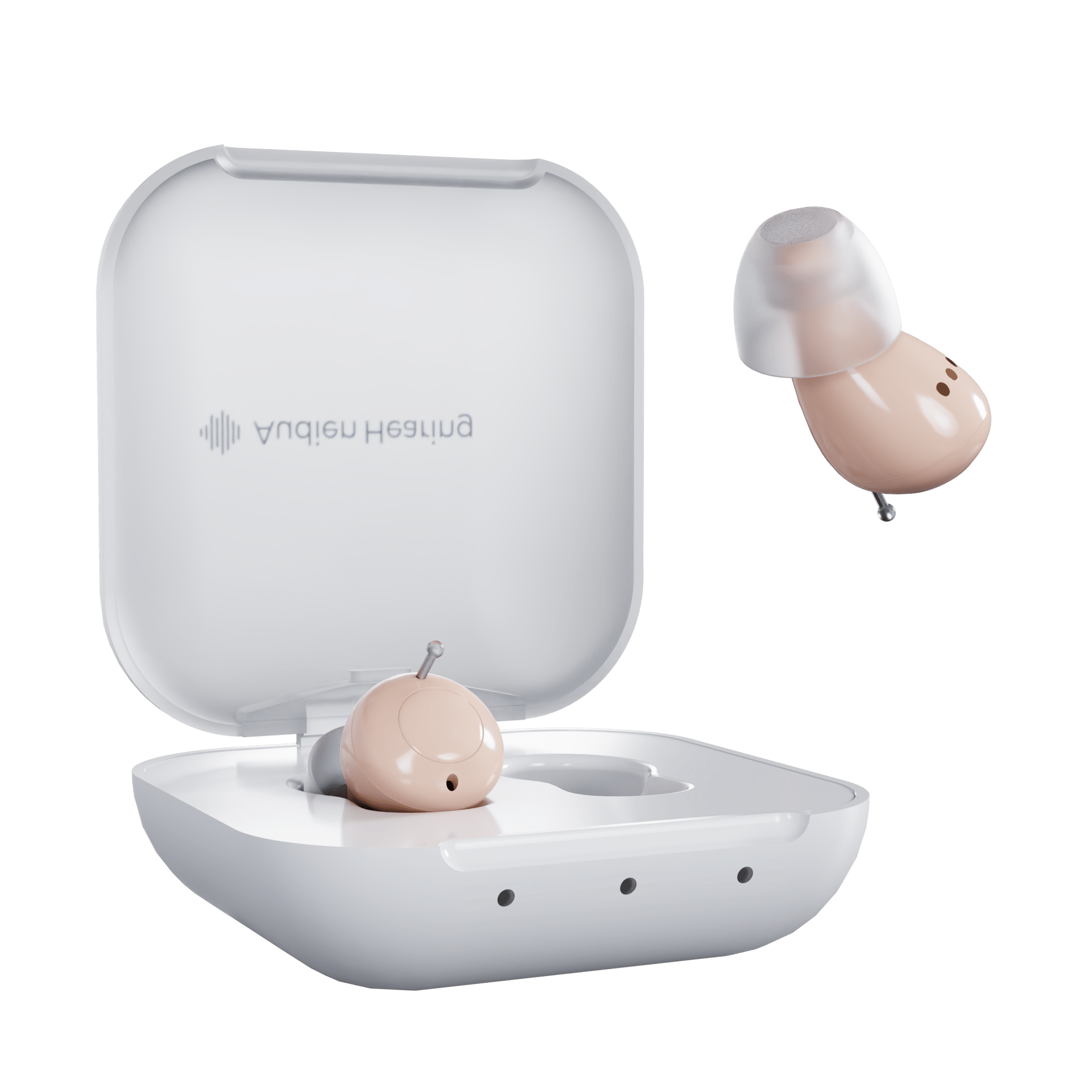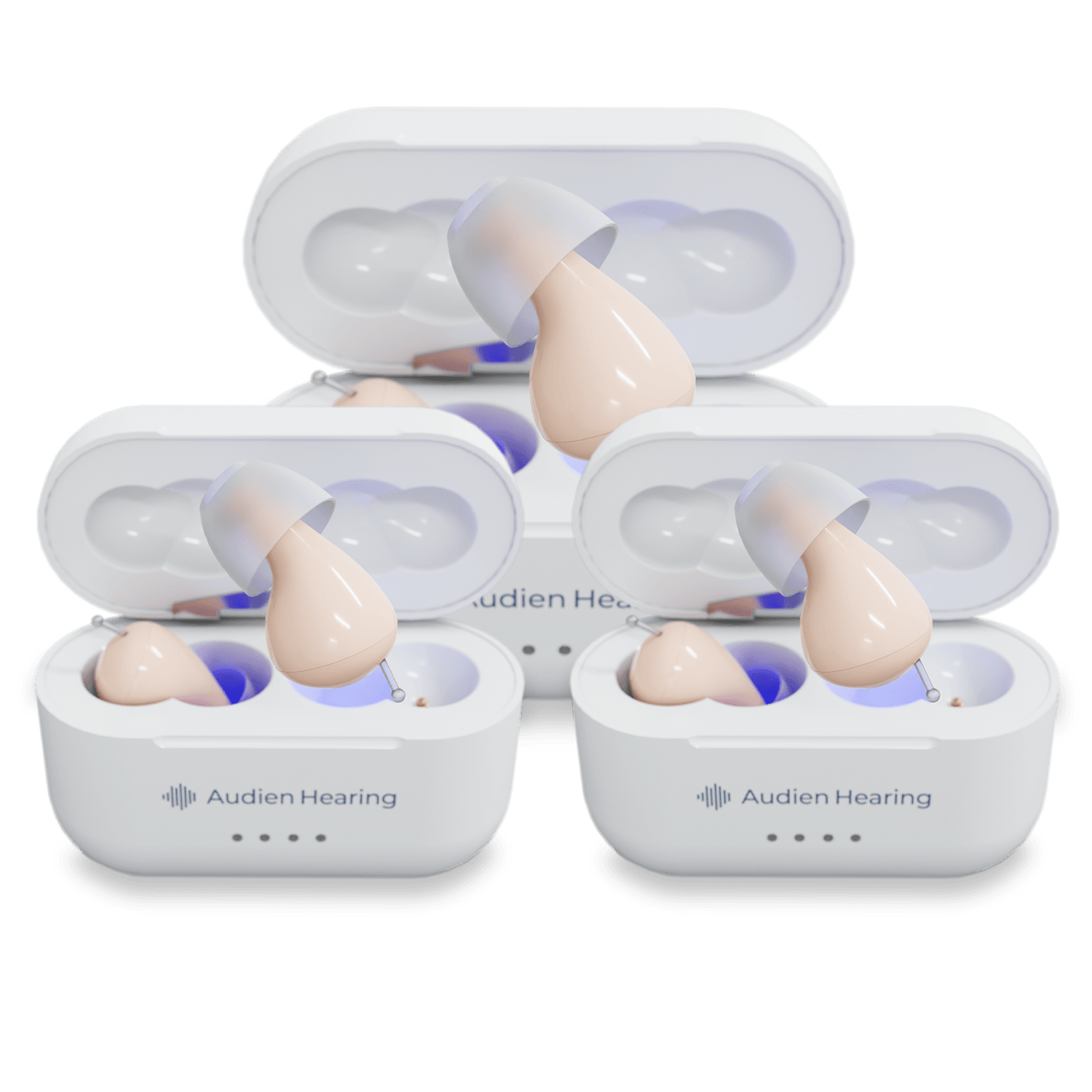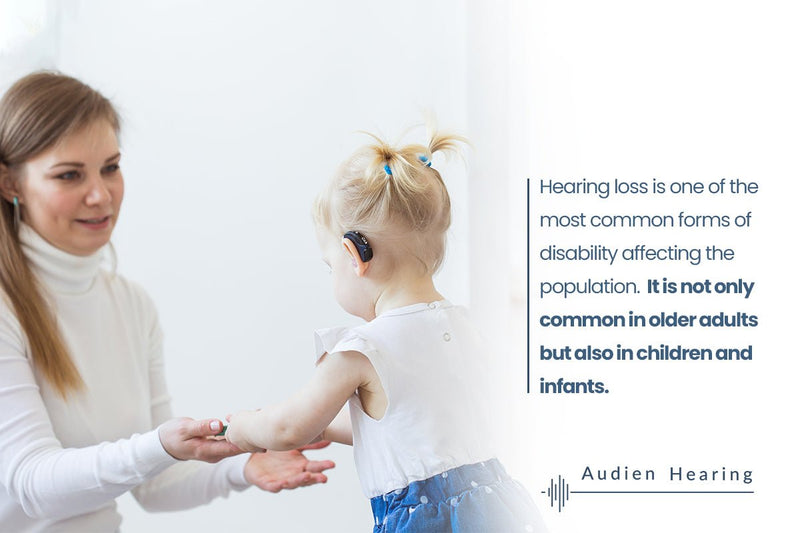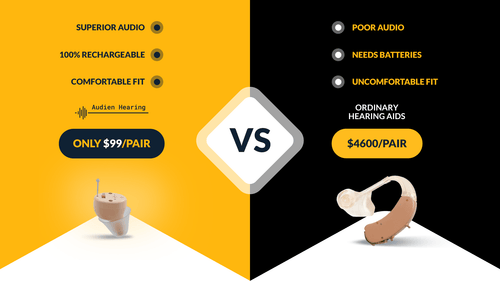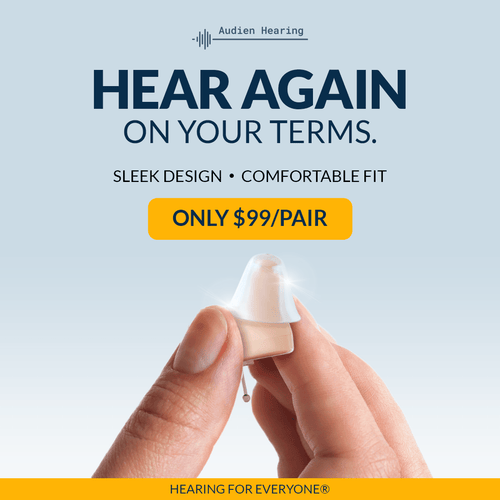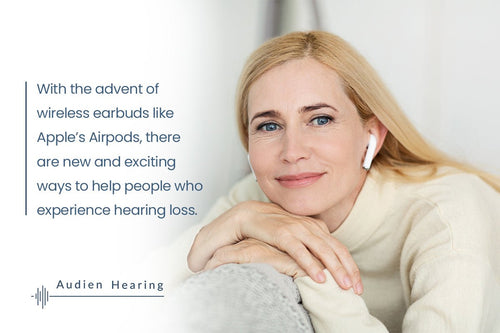Hearing loss is one of the most common forms of disability affecting the population. It is not only common in older adults but also in children and infants as well. This means that many parents are faced with the reality of navigating hearing loss for their child or infant.
If you are a parent faced with this challenge, it can seem overwhelming to think about all of the work that you need to do. Not only do you have to learn about an entire world you may not understand, but you have to do so while advocating for your child, who may not be old enough to advocate for themselves at all.
“Hearing aids for children are vital to the child’s growth and development. Without proper hearing aids, children can feel isolated and left out. Most children have improved academic skills when able to hear better.” - Drew Sutton, MD, Board-Certified Otolaryngologist.
The good news is that since this affects a large part of the population - you are not alone, and there are many resources you can utilize. The most important thing you can do is understand that your child needs patience and advocacy as you learn how to provide your child the best treatment and care.
Is There a Difference Between Adult Hearing Loss and Pediatric Hearing Loss?
The short answer to this question is - no, there is no difference. For the most part, all people are affected by the three major kinds of hearing loss: conductive, sensorineural, and mixed. To find out what kind of hearing loss your child may have, you will have to get special testing from an audiologist to diagnose your child’s condition.
Suppose you are unfamiliar with the different types of hearing loss. In that case, it can be beneficial to know the basics to understand your child’s condition and diagnosis better.
Conductive Hearing Loss
The ear itself is composed of three unique, highly functional compartments: the outer ear, middle ear, and inner ear. Each plays a very important role in the process of hearing, and conductive hearing loss is when there is any kind of physical impediment in these compartments.
This can be as minimal as ear wax build-up or as detrimental as inflammation in the inner ear due to an autoimmune disease. The degree of hearing loss that a person can experience with conductive hearing loss varies greatly as well. A person experiencing conductive hearing loss could have a very slight hearing impairment where things can sound slightly muffled. At the same time, a person with conductive hearing loss may have an enlarged eardrum blocking sound from entering the tympanic cavity correctly.
Sensorineural Hearing Loss
The majority of hearing loss that affects children is sensorineural. This kind of hearing loss is associated with the neurological functions of the hearing process. It will primarily affect the inner ear and its ability to properly take the sound waves that travel through the ears and translate them into electrical impulses.
There are many causes for sensorineural hearing loss. However, most causes for pediatric hearing loss remain unknown. People with a treatable form of sensorineural hearing loss will generally be pointed toward hearing aids. However, if the case is more severe, a cochlear implant is another typical treatment.
Handling the News of a Hearing Loss Diagnosis
Even though your child may have the same kind of hearing loss that an adult can develop, that doesn’t mean all the steps are the same when dealing with hearing loss.
The biggest thing that is different is the level of advocacy your child needs to have. As an adult, understanding the process or steps of hearing loss makes new devices like hearing aids or cochlear implants easier; however, this may not be apparent to children.
Hearing Aids for Children
When it comes to hearing aids for kids, the same basic styles are used as with adults. However, the choice you will make when getting your child a hearing aid will depend on different factors. First, however, let's look at these four common hearing aids styles that you will choose between.
In-the-Ear Hearing Aids
In-the-ear hearing aids, or ITE for short, are the larger of the two subsets of hearing aids that fit within the ear canal. These will sit in the dom of the ear and are easily visible. These hearing aids are generally used for moderate to severe hearing loss. They can also house more processing power than other forms of hearing aids.
Canal Hearing Aids
These are the second kind of hearing aids that fit inside the ear, typically much smaller. In fact, there are two subsets of canal hearing aids, the in-the-canal (ITC) hearing aids, and the complete-in-canal (CIC) hearing aids. The main difference here being size. The ITC hearing aids are slightly larger and visible when worn. They are not as large as the ITE hearing aids, however. The CIC is the smallest form of hearing aids and is typically referred to as invisible hearing aids since a person can wear them with complete discrepancy.
These are typically the most problematic for children, followed by the ITE models. For the canal hearing aids, they not only post the problem of being small and challenging to place in the ear and remove - but they also do not have the processing power of other styles. Their small size comes at a cost and typically services mild to moderate hearing loss.
Behind-The-Ear Hearing Aids
These hearing aids, also known as BTE, are by far some of the most popular and well-known hearing aids on the market. They can come in two general styles of housing the receiver - the microphone that receives sound into the device - either behind or inside the ear canal. Regardless, they are always fitted with an external piece that fits snuggling behind the ear.
This external piece typically houses the power source and processing power. Since the overall form fact of both styles of BTE provides more space for more processing, microphoning, and battery power, these hearing aids are typically the most popular choice for children. They can serve a wide range of hearing loss needs.
Body Aids
Lastly, these hearing aids are carried on a belt or in a pocket and connect via a wire to receivers in the ears. These devices are the heftiest of the hearing aid family and provide the most battery power and processing power. Body aids are typically used for severe to profound hearing loss.
Factors When Choosing Hearing Aids for Your Child
If your child has been diagnosed with a hearing disorder that merits hearing aids, then your doctor and audiologist will have an adequate opinion on what treatment you need. Never be afraid of getting enough education from medical professionals until you feel informed enough to choose the best hearing aid option for your child.
Age and Comprehension of Your Child
When choosing a hearing aid, remember that your child’s age and level of comprehension are very important when making this decision. For any child, getting used to the hearing aid itself will be a learning curve. Being diligent in staying on top of your child’s needs as they learn how to leave the hearing aid in their ears will be a full-time job for any parent. However, that doesn’t mean that you should go with a hearing aid that can be easily pulled out.
For instance, choosing an in-ear style hearing aid over a behind-the-ear style may not be wise when swallowing hazards may be a concern. Yes, your child may be able to pull off the BTE style easier, but typically these are larger and harder for the child to fit in their mouths.
Maintenance
Hearing aids themselves run off of rechargeable batteries, so staying on top of their battery charge is key to your child’s development. Most manufacturers create children’s hearing aids with LED lights that will indicate the battery level without interfering with the device.
Cleaning and upkeep of the hearing aid are also factors to be aware of as this may be solely your responsibility if your child is not capable of doing this on their own.
Conclusion
In conclusion, remember that the correct choice for your child’s hearing aid is out there, and you are capable of discovering it.
With the help of your primary care provider and audiologist, you can find the correct device that best suits your child’s needs. It will take a lot of patience and learning as this will be a journey that you and your child will be embarking on together as you both learn how to take care of the hearing aids. So, make sure to practice patience and understanding with yourself and your child as you learn how to use hearing aids first.
Sources:
Types of Hearing Loss in Children | saintlukes.org


